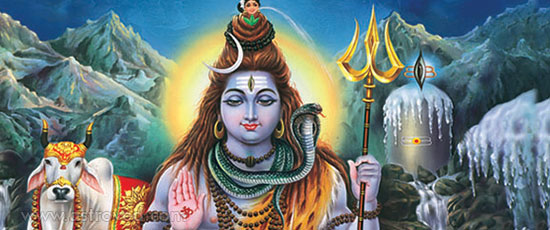6 Forms of Shiva that Every Shiva Devotee Must Know
Did you know that all the Gods are known as Devas, but only one God is called Mahadeva? Shiva is the only deity who is the overlord of 3 out of the 9 planets (Sun, Jupiter and Saturn). He is the God of Destruction because transformation takes place when new order replaces the old. There are references to Lord Shiva in the epic Mahabharata where Lord Krishna and Arjun were both ardent devotees of him and in Ramayana where Ravana was a huge follower of his. Lord Rama himself was an ardent devotee of Lord Shiva and installed lot of Shiva Lingas in the forest during his time.
He is one of the most popular deities and people from all the over the world including India, Nepal (as Pashupathinath), Indonesia (as Batara Guru), Central Asia (as Yajnopavita) and Malaysia (as Sang Hyang Manikmaya) pray to him. One of the most unique things about this deity is that he is worshiped not only by the Hindus, but by Buddhists, Sikhs and Zoroastrians (as Vayu-Vata) equally.
Varied forms of Lord Shiva
Shiva is one God who has numerous names and forms. There are some forms of his that are more important than the rest and which make him the Lord to who people resort at all times.
- Bhairava and Shambhu: One of the most astonishing aspects about Lord Shiva is that he is both benign and terrifying at the same time. In his Bhairava form, he is depicted as the one who is very fierce. Contrary to this, he is also shown as Shambhu the one who brings happiness.
- Mahayogi and Umapati: These are again two very diverse and completely contrasting forms of Lord Shiva. As a Mahayogi he is a yogi (sage) who sits and meditates for the longest possible time. On the other hand, he is also Umapati the husband of Goddess Parvati (also known as Uma) and the father of Lord Ganesha and Muruga. As Umapati, he is a family man.
- Ardhanarishwara: Once when Lord Shiva was very happy with Goddess Parvati he decided to gift the left half of his body to her. In its literal sense, Ardhanarishwara means half-man half-woman since it is a mix of Lord Shiva and Goddess Parvati into one form.
- Nataraja: Lord Shiva is denoted as the eternal dancer. He is worshiped by all dancers in this form of his since he is supposed to be an inspiration to all people who wish to learn dance. Tandava (the powerful dance) and Kala-Mahakala (the dance of destruction) are the most common forms of dance that Shiva performs.Read more
- Hanuman: This incarnation of Lord Shiva is considered to be the most supreme and powerful of all his forms. He mainly took this form to show the world the beautiful relationship that the Lord and devotee share. This is also considered to be one of his simplest and calmest forms.
- Neelkanta: Lord Shiva had to take this form when he had to save the beautiful world from destruction. All the poison that came out of the churning of the ocean (Samudramanthan) was consumed by Shiva and to prevent it from spreading to the entire body Goddess Parvati had to put her palm around his neck.
Even today and for generations to come, Lord Shiva would be hailed for many wonderful things he has done to keep the world protected at all times. Some of the good times to worship him are every Monday, 13th waxing and waning Moon days, 14th waning Moon (monthly Sivaratri) days and Ardra star days. Chanting ‘Om Namaha Shivaya’ is very good for everyone to lead a content and stress-free life.





















